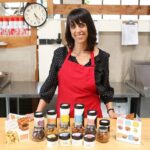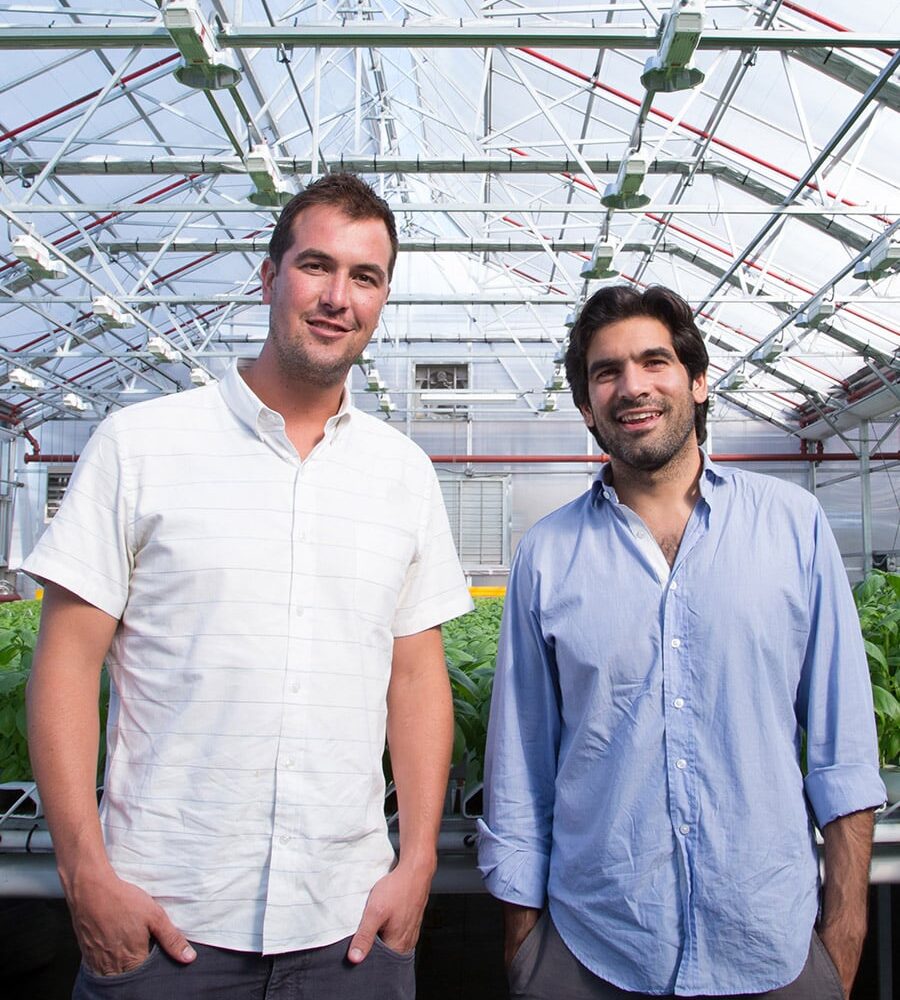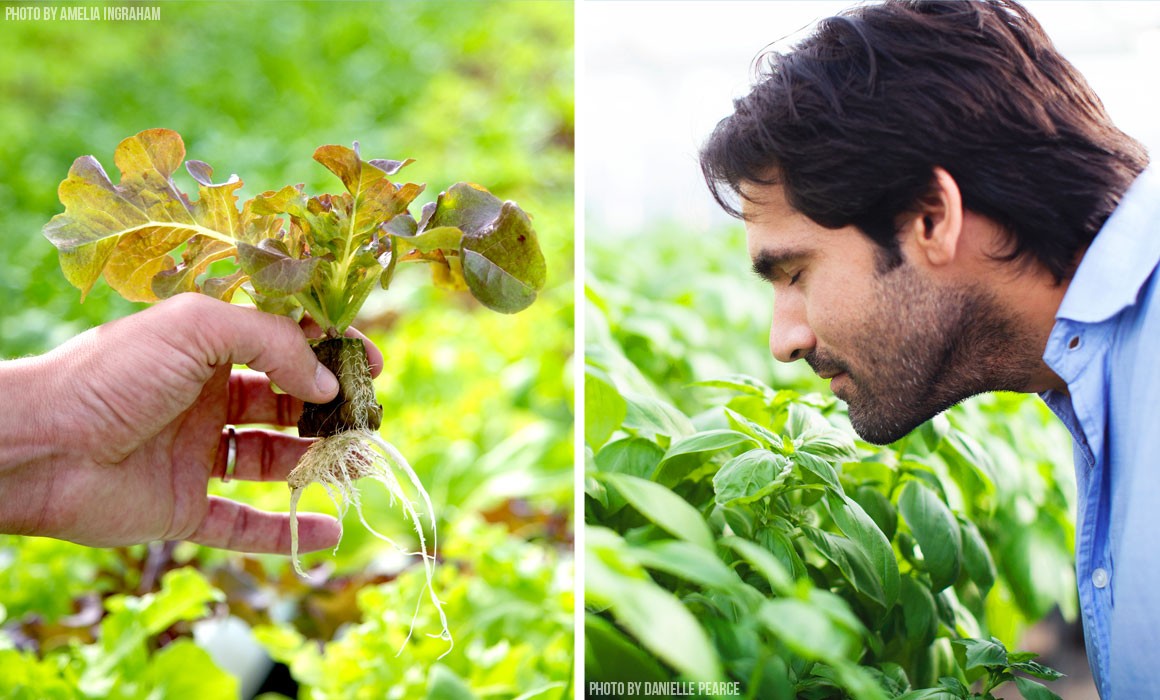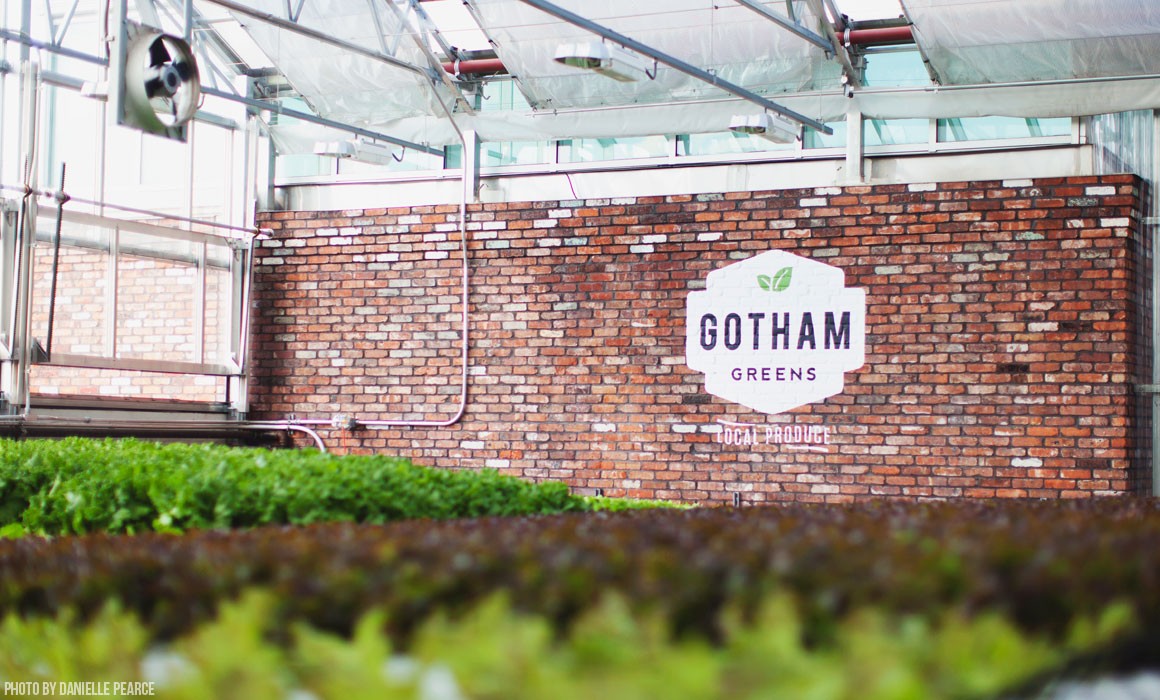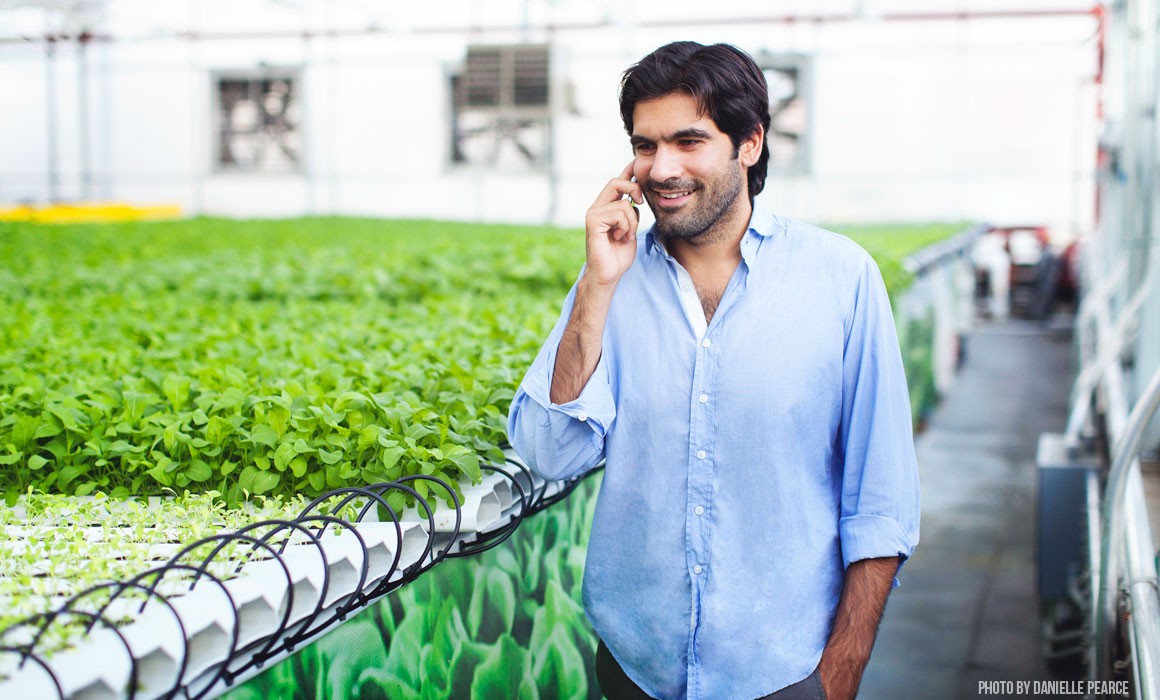Gotham Greens, First U.S. Commercial Rooftop Greenhouse
Imagine walking into your local grocery store and picking up a head of lettuce that was just clipped, packaged and delivered straight from a greenhouse located upstairs. This is happening everyday in Gowanus, Brooklyn as Gotham Greens has become the first commercially successful hydroponic rooftop farm to distribute the majority of their produce directly to the Whole Foods that sits beneath them.
Now health conscious eaters in the area can literally observe the process of how their food is grown, harvested and integrated into the store they shop at regularly. Founded by Viraj Puri (33) and Eric Haley (33) in 2008, Gotham Greens has taken root in New York City with their disruptive and blossoming agricultural model. Their product line of leafy greens and herbs includes bok choy, kale, arugula, swiss chard, butter lettuce, iceberg, romaine, basil, and even a variety of tomatoes.
MiLLENNiAL visited the acclaimed Gotham Greens garden in Gowanus where a sea of leafy edibles covered the 20,000 square foot rooftop greenhouse. We met up with the founders to learn how they were able to commercialize farming in urban cities.
Envisioning a New Way of Eating
Over the last 15 years, eating habits and general health awareness has vastly changed the landscape of the food industry. Walk into any grocery store today and you’d be hard pressed to not see the words “local” and “organic” plastered throughout the produce department.
Gotham Greens may be a relatively new company, but the conceptual seed was planted long ago. What started as a couple of college kids dreaming about a sustainable way for commercial farming to take place in the city has now turned into an expansive enterprise.
Viraj explains what sparked the creation of the urban farm, “Around the year 2000, we were seeing a proliferation for local food, farmers markets, celebrity chefs touting farm to table restaurants- that’s when it really struck us as a compelling business opportunity.”
“There was a steep learning curve and it took a lot of perseverance.”
While the idea was speaking to the trends of the times, getting the business off the ground was a challenge all in itself. Being the first of its kind, “There was a steep learning curve and it took a lot of perseverance,” Viraj tells us. Without a business model to follow, Viraj and Eric faced many challenges in obtaining the resources to properly execute their vision. “It’s something that had never been done before on a commercial scale.”
Building a Commercial Greenhouse in New York City
For three years, Gotham Greens struggled to get approval for permits, find team members with similar values, design and construct a well-engineered facility, and raise enough capital to finance their operation.
As a recent MBA student in 2008, Eric admits it was difficult getting funding for an idea that had no proof of concept. “When you’re a startup with no operating experience it’s a hard sell,” he says, “[but] we were able to convince people that we were changing the way produce was being grown and supplied to the urban environment.” In 2011, they overcame all initial hurdles, opened their flagship greenhouse and started production in Greenpoint, Brooklyn.
Gaining early recognition from buyers like Whole Foods and renowned Gramercy Tavern chef, Michael Anthony, Gotham Greens began to grow as the trusted source for high-end quality products. Their perishable rate is significantly better than competitors transporting goods from longer distances.
Leafy greens and herbs are known to have a relatively short shelf life. By the time most consumers buy the product, the produce has only a few days remaining before it begins to wilt. Gotham Greens has increased that timeline by strictly maintaining a 25-mile radius for distribution, insuring the product arrives fast and stays fresh for an average of 10-14 days.
Gotham Greens’ Devotion to a Sustainable Model
In addition to solving a transportation issue, Gotham Green has created a fully sustainable position. They have reduced costs for their business expenses and saved a considerable amount of resources.
“We use about 10 times less water than conventional farming.”
The Gowanus greenhouse is 20 times more efficient than commercial farms, meaning “that if this is an acre we are yielding that of a 20 acre farm,” Viraj explains. One example of the efficiency is the reduction of water use. All irrigation is circulated and captured. “We use about 10 times less water than conventional farming,” he adds.
As water becomes a scarcity, especially in places like California, hydroponic gardening is proving to be a positive and cost-effective alternative to mass land agriculture. “We have eliminated any sort of pesticide run-off or fertilizer use, which are major causes of global water pollution, and are using a lot of renewable energy.”

Complete with an automated programing system, the greenhouse is set up with sensors that monitor light levels, CO2, temperature and humidity, sending information to the windows and roof to open and close in order to create the perfect weather conditions. With a state-of-the-art facility, Gotham Greens is able to grow and harvest year-round. This allows them to produce a “fresher product with a smaller carbon footprint.”
Partnering with Whole Foods and Expanding Throughout the Country
An early adopter of the lifestyle and principles Gotham Greens was promoting, Whole Foods soon became their largest consumer. Viraj explains, “Whole Foods shares a lot of the same values in terms of commitment to sustainable agriculture and eating healthy foods without the use of harmful chemicals.”
And there was good reason for their eager demand. While they were buying large quantities of Gotham Greens’ produce, the grocery store chain was actively planning to build an environmentally sustainable store in Gowanus that would be unlike any other Whole Foods in the nation.
“We started talking about maybe integrating a greenhouse into that store. So we struck a business relationship where they [Whole Foods] own and operate the store downstairs and we own and operate our greenhouse upstairs,” Viraj says.
The store debuted in December of 2013. By January of 2015, Gotham Greens officially opened their doors in the new location. “We have a unique marketing and sales agreement where the majority of the produce that is grown in this greenhouse is sold in the store downstairs.”
Now supplying 20 Whole Foods within the New York and New Jersey area, this rooftop agricultural phenomenon will increase that number to 40 within the Chicago area. They are currently building their first Midwestern greenhouse in the “Windy City.”
As more consumers begin to demand the most locally produced goods, businesses like Gotham Greens will become a societal norm. While they may have been the first, they certainly have knocked down the door for more to come.
With the success of each location, hydroponic greenhouses will make it to a town near you in the years to come. To learn more about sustainable agriculture and find a Whole Foods that distributes Gotham Greens produce, visit their website.
Photography by Danielle Pearce and Amelia Ingraham



